
Sign up for The Wanderful newletter
Join our growing community of people looking to live the simple life!
Let’s build your van now
Join our growing community of people looking to live the Simple Life


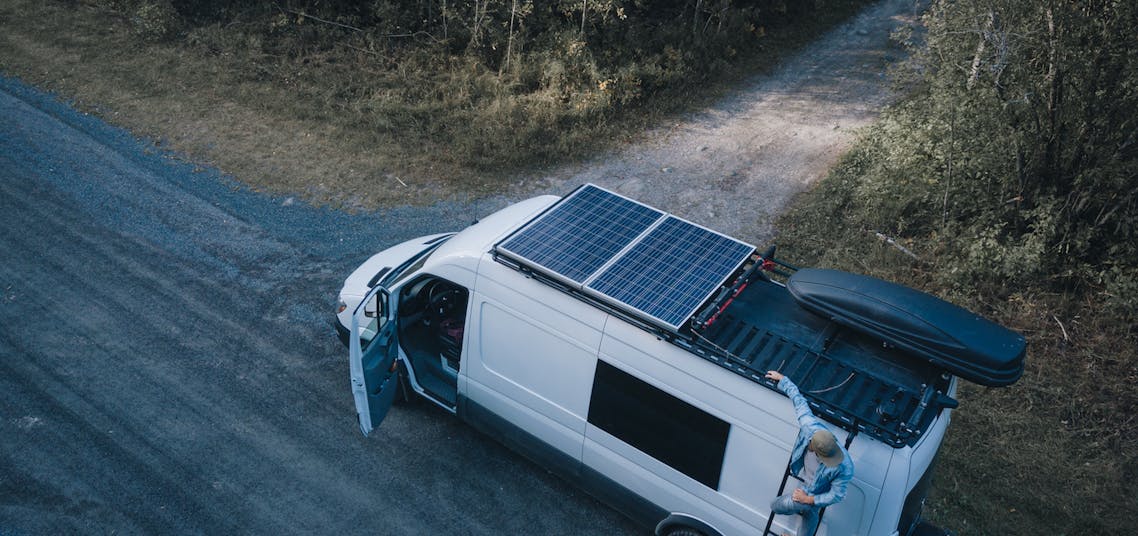)
This is often a tough decision for many aspiring and experienced Van Lifers who are planning their next conversion.
The Sprinter Van comes in 3 different sized wheelbases:
In this article, we’re going to be focusing on 144″ vs 170″.
Before we jump in, it’s important to understand what Wheelbase means. In short, wheelbase (WB) is the distance between the centers of the front and rear wheels.
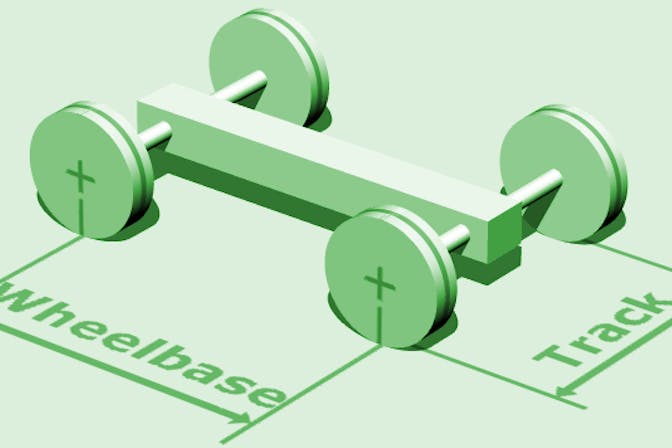
So what are the differences between the 144″ WB and the 170″ WB and which one is best for Van Life? Let’s find out.
The first obvious difference between these 2 vans is the dimensions.
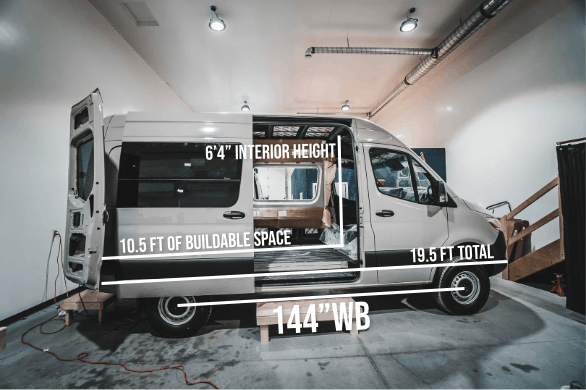
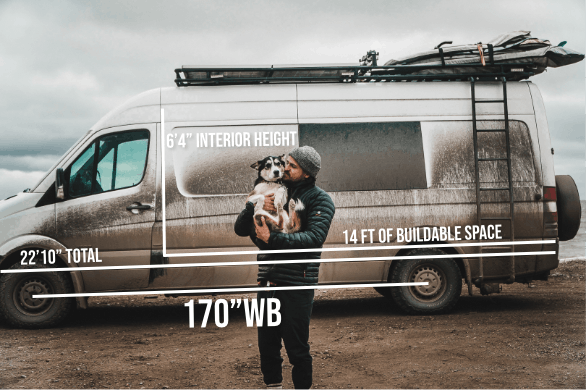
In terms of buildable space, the 170″ gives you an extra 3.5ft to play with. This precious 3.5 feet could bring you one step closer to your dream van build (think bathroom, bike storage, etc).
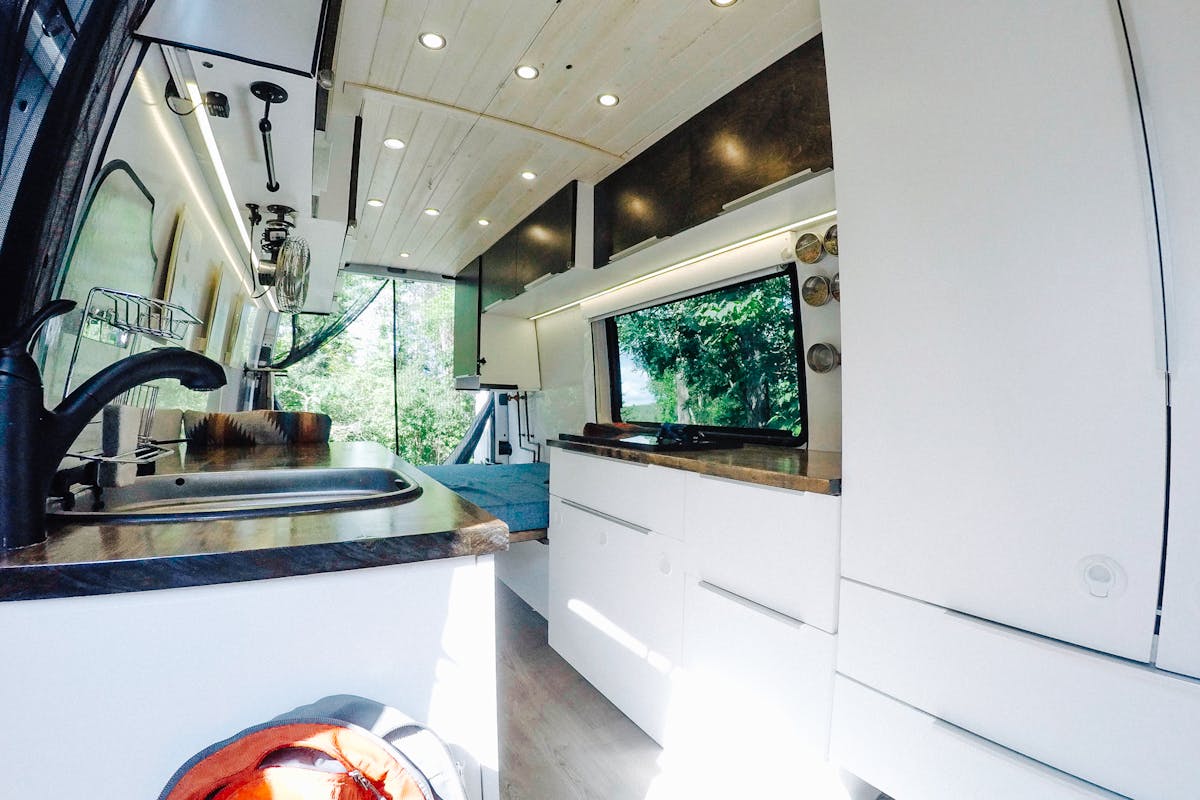
If the 144″ still wins your heart over, one suggestion would be to swap in some swivel seats so you can really get the most use out of the front of the van.
IMPORTANT: What a lot of people fail to notice is that both the 144” and 170” have the same max Gross Vehicle Weight Rating (GVWR) of 9,050 lbs (4.1t).
What does this mean?
While you have more space to build out the 170” WB, the overall weight allowance of your van is the same as the 144”. 9,050 lbs may sound like a crazy amount of weight, but you’ll be shocked to see how close you will get to that number after adding all the build materials, water storage, gear, clothes, food, etc, etc.
When it comes to parking, the 144″ is slightly easier to maneuver. Contrary to what you might think, the 170″ does fit in a standard-sized parking space, as long as you pull all the way in. However, if you find yourself in a very tight parking lot, you might also find yourself sweating a little bit.
Whether you choose the 144″ or the 170″, I would suggest adding a backup camera to your van. Both vehicles are large and you should take advantage of the extra visibility a camera can give you.
In my personal experience, I’ve had no issue driving my 170″, but it’s certainly an adjustment if you’re used to driving smaller vehicles.
The main thing to consider is that the 144″ has a better turning radius, making U-Turns and 3-point turns that much easier.
While many people say they would prefer to DRIVE the 144″, they would also prefer to LIVE in the 170″, so it really depends on what’s more important to you.
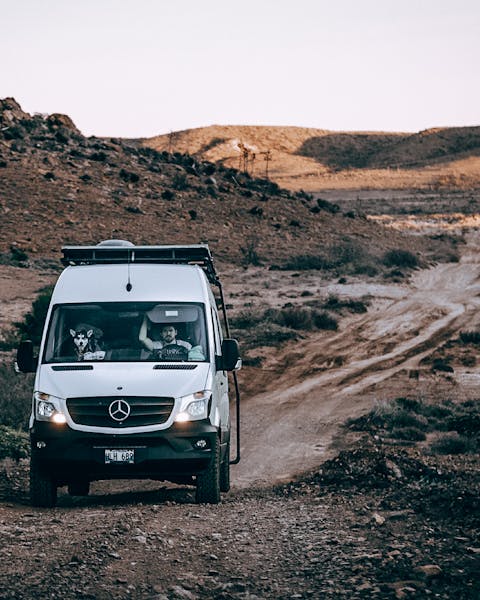
Aside from wheelbase, there are a lot of other factors to consider when planning an off-roading adventure in your Sprinter van. Things like ground clearance, tires, 2WD vs 4×4…
But focusing specifically on the wheelbase, the 144″ may be the winner in this category simply because of its rampover angle.
The rampover angle is the angle between the front and rear tires and the lowest midpoint of the body. When coming down off rocks or steep climbs, you want to make sure the body of the vehicle doesn’t hit the terrain. Generally, the longer the wheelbase, the worse the rampover will be.
Regardless of the wheelbase you choose, I recommend upgrading the factory suspension with the Van Compass Suspension Kit. This kit will really help turn your home-on-wheels into more of an adventure van.
After traveling in my Self-Converted Sprinter 170″ for 4 years, I can assure you that the extra space is a nice touch. However, my second van conversion is actually a 144″ Sprinter.
Why am I making the change?
Well, the downsize is mostly a personal challenge to myself. I go more into detail on the changes I am making in my second van build here:
Here’s my recommendation…
If you’re a solo traveler or a very minimalist couple that won’t be packing a ton of gear (bikes, etc), the 144″ would be perfectly fine for you.
If you have a lot of extra gear (bikes, surfboard, snowboard, etc) or you’re traveling with multiple people, I would suggest the 170″. That extra 3.5 ft can make all the difference to your van layout.
That 3.5 ft of space might also be what saves you from stepping on your partner’s toes… Literally.
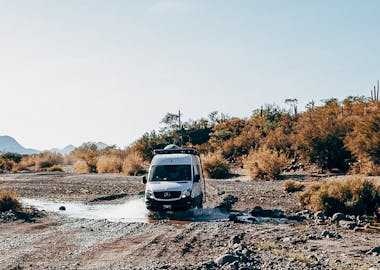)
If you’re anything like I was, you’ve probably asked yourself this question a million times while researching your upcoming van conversion project.
)
Are you wondering how to convert a van but don’t know where to begin?
)
Finding a suitable insurance policy to cover the upgrades you’ve made to your DIY camper van can sometimes feel impossible, in some provinces/states.